Pictures are from Flickr. Please run your mouse over the pictures to learn the owners of these pictures! 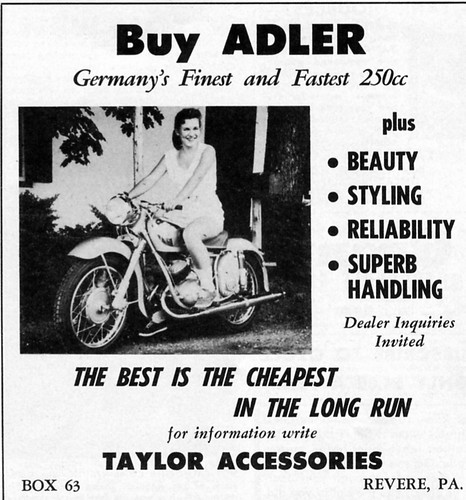
photo by montanaman1
The Adler motorcycle...never heard of it? That's OK...unless your a huge motorcycle buff digging for any and all information on anything motorcycle...you wouldn't have heard of this bike!

photo by alex81547
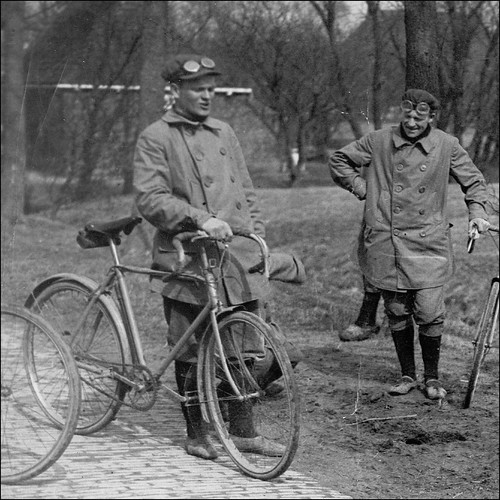
Photo:letterlust
The Adler started life as a bicycle plant in 1886...by 1895 the company also started building typewriters...
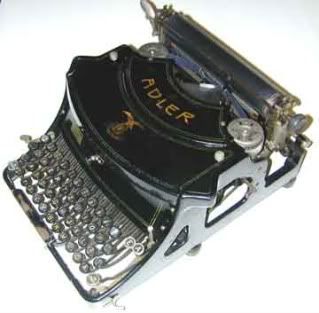
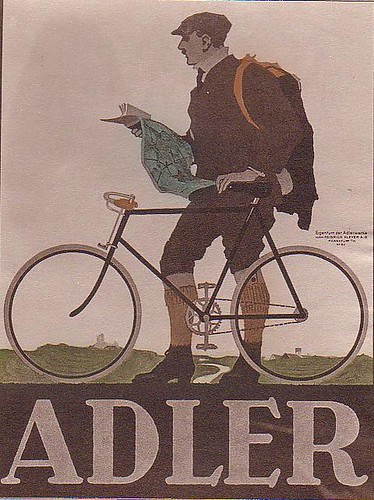
Photo:Mr. Cranky
The Adler motorcycle engine actually was a brain child that sprouted forth from their automobile engine. The engine was a small 2.5HP single, with both valves side by side in the front of the cylinder block, whose breather inlet was opened by suction.
By 1907 the side by side valve design had been replaced by the wildly popular design of the day...the inlet over the exhaust valve layout(OHV)...but still using the suction automatic breather inlet. There were eight models in the 1907 catalog...You could still buy a 2.5 as well as the 3HP single, but the new V-Twin models boasted not only the 3HP...but a lively 4HP as well!You have heard of the Bosch ignition lineup right? Well Adler gave you the option of a Bosch Magneto or a standard coil ignition.
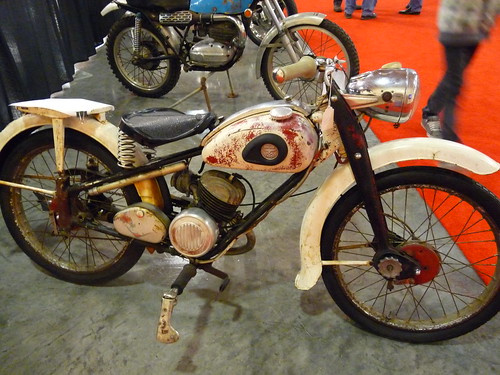
Photo:El Caganer

Photo:stkoneM200 Design
You could also order your bike to made with forecar attachments, a trades men's box, and a scarey looking sidecar with a wicker seat.
Alas...by the end of 1907...Adler removed themselves from the motorcycle manufacturing business. Leaving only Wanderer and NSU as German Motorcycle makers.
Adler concentrated on making typewriters,bicycles and cars until after World War II. (1945, I know one of these pictures states 1939 on it...I'm still checking out facts on that one) At the end of that war, the Allied forces (military government administration) limited motorcycle designs to 60cc. Herman Friedrich, Adler's managing director and chief engineer, wanted to accept the challenge...as with most manufacturing plants of that nature...he would not be alone in rebuilding his factory for such and endeavor.
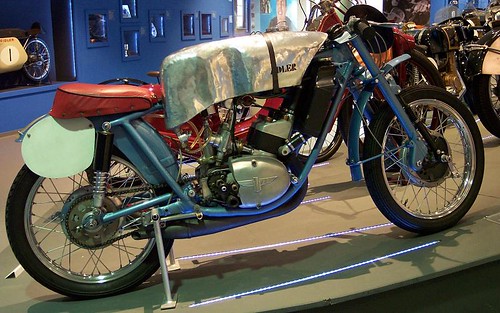
Photo:stkone"Adler Rennmaschine"
Friedrich's vision for this new motorcycle design would toss out the bicycle type frames. He saw his machines with modern, powerful and reliable engines mounted in an up to date frame. His machine would be comfortable to ride...as well as light!

Photo:bayernernst
By 1949 the Allied restrictions had been lifted. Adler came out with a motorcycle sporting a rather conventional 98cc two stroke engine, known as the Adler M100.
The engine boasted the Schnurle Loop-scavenge. This machine also came with a three speed transmission, kick start pedal, and running boards.
 Photo:bayernernst Adler M100
Photo:bayernernst Adler M100 The sales for the Adler M100 were not what could be called "lack luster", nor was the public knocking down the doors to buy one of these. That honor went to NSU Fox, with it's 98cc OHV four stroke engine and it's cantilevered swing arm.
In order to compete, Adler was forced to enlarge their fleet. When the Frankfort Motorcycle Show opened in October 1951, the company had added three new models to their stable...the M125 (a bigger version of the 98cc with a braking HP of 5.5.
Now imagine, if you will...the M200,the first modern twin cylinder 2 stroke. In order to outdo the rest of the motorcycle builders...and to enlarge the customer base, Friedrich and his engine man, Felix Dozekal designed a risky new engine...they were after all currently competing with the likes of DKW and others. Compared to the M100's 121 pounds...the heavy weight champion of the Adler line weighed in at a hefty 297 pounds!
Throughout the 1950's Adler continued to be the innovator of design...from front forks to a new swing arm design...Adler continued to vie for attention.
Adler was also responsible for a new gear box design for the lower end...ingenious design using precision gears that melded seamlessly together from each half of the case.
Unfortunately, by 1955, Europe was experiencing an economic downturn...and by 1957, Grundig bought out the Frankfort Adler Works. Ending an exciting era in German engineering!








0 comments:
Post a Comment